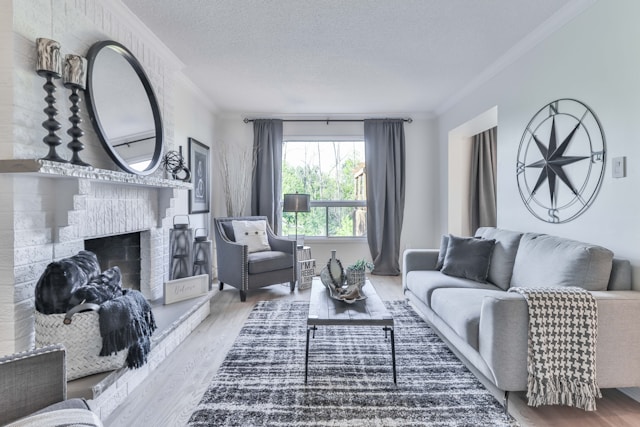In today’s dynamic world, the concept of a modern home is evolving rapidly. It’s no longer just about aesthetic appeal or luxury.
Modern living now emphasizes sustainability, energy efficiency, comfort, and usability. Redefining modern living means creating homes harmonizing with nature, providing comfort, and catering to future generations.
Here are the essential features that transform a house into a green, comfortable sanctuary.
1 – Harnessing the Power of the Sun
One of the most effective ways to achieve a sustainable, green home is by incorporating solar collectors. These systems convert sunlight into usable electricity, reducing the reliance on non-renewable energy sources.
Homeowners can generate clean energy on-site by installing photovoltaic cells, drastically lowering their carbon footprint while cutting energy costs.
Additionally, solar arrays often qualify for government incentives, from tax credits to rebates, making this green choice both environmentally and financially savvy. Embracing PV panels power your home sustainably and move you closer to a greener, more responsible way of living.
2 – Embracing Wide Windows
Expansive windows are a cornerstone of green home design, offering numerous advantages contributing to sustainability and comfort. These expansive openings flood interiors with natural light, significantly reducing the need for artificial illumination during daylight hours. This reduces electricity usage and creates a brighter, more inviting atmosphere.
Expansive windows offer benefits beyond lighting. They play a crucial role in passive solar heating, allowing sunlight to warm living spaces naturally and decreasing reliance on heating systems.
To maximize these benefits, consider strategic furniture placement. For instance, positioning a convertible sofa near a wide window creates a versatile, sun-drenched nook.
This arrangement allows occupants to bask in natural light while reading or relaxing and quickly transforms the space for overnight guests without sacrificing the eco-friendly advantages of the window-centric design.
By harnessing the power of expansive windows, homeowners can create energy-efficient, comfortable spaces that seamlessly blend indoor living with the natural world outside.
| Space-saving Tips: Murphy beds, fold-away desks, and movable walls create dual-purpose rooms that maximize floor space and offer flexibility. |
3 – Energy Efficiency to Reduce Consumption
Energy-efficient homes are the future of modern living. With the growing emphasis on reducing carbon footprints, architects and homeowners focus on cutting energy consumption. Installing energy-efficient lighting, such as LED bulbs, is the first step.
Switching to LED lighting can save around $225 annually, as lighting accounts for 15% of a home’s energy use. ENERGY STAR-certified bulbs offer the highest savings.
Equally vital are energy-saving appliances—think of programmable thermostats and high-efficiency HVAC systems that help regulate indoor temperatures while conserving energy.
Proper insulation and energy-efficient windows reduce the need for constant heating or cooling, ensuring climate control and optimizing energy use, making living sustainable and cost-effective.
4 – Sustainable Materials for Eco-Friendly Construction
Sustainable homes prioritize using renewable and recyclable materials. Bamboo flooring, reclaimed wood, and recycled steel offer both durability and sustainability, ensuring a house is built without depleting natural resources.
Natural insulation materials such as wool or cellulose ensure that homes can stay warm in the winter and cool in the summer without relying heavily on artificial air control.
Eco-conscious homeowners also opt for non-toxic paints and finishes to protect indoor air quality and reduce the emission of harmful volatile organic compounds (VOCs). Environmental impact is minimized at every stage, from building materials to interior finishes.
5 – Water-Saving Fixtures for Environmental Responsibility
Photo by Freepik on freepik.com
Alt Text: person hand turning the faucet off
Water conservation cannot be overlooked when designing a green home. Innovative irrigation systems, low-flow showerheads, and dual-flush toilets significantly reduce water usage, making your home eco-efficient without sacrificing comfort or convenience.
Rainwater harvesting systems are also gaining popularity, providing homeowners with an alternative water source for irrigation, flushing, or household cleaning needs.
Well-planned landscaping can further aid in water conservation. By selecting native plants that naturally thrive in the local climate and using rain gardens to direct water flow, homeowners can reduce their environmental impact while enjoying visually striking outdoor spaces.
| Indoor Air Quality for Health: Installing air-purifying systems, such as HVAC units equipped with high-efficiency particulate air (HEPA) filters, and using materials that emit fewer VOCs. |
Creating a Responsible, Comfortable Sanctuary
Redefining modern living means embracing an eco-friendly lifestyle while prioritizing comfort, health, and adaptability. From energy efficiency to innovative technology, the modern home of tomorrow effortlessly combines sustainability with design choices.
By investing in a green home today, homeowners commit to a comfortable, responsible way of living that leaves a smaller footprint on our planet—and a better future for the next generation.



